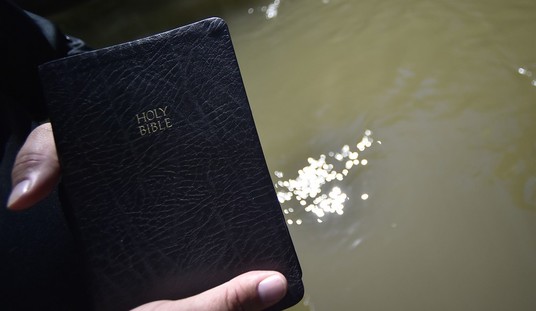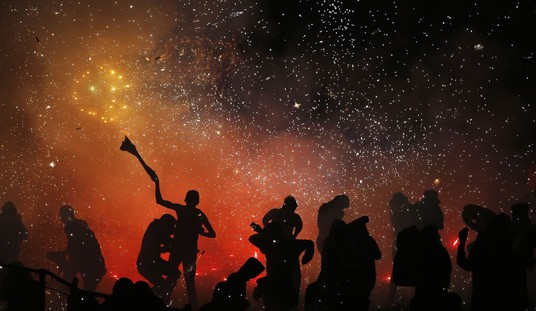If there’s another war in the Pacific, this is how it will play out.
The hardest of all political facts to change is geography. Faced with the problem of whether it could project sufficient power into the Western Pacific to defeat a major naval power, the United State’s Navy’s War Plan Orange (WPO) before World War 2 secretly concluded that it could not. The inner logic of WPO dictated that the relief of the Philippines would have to await the full mobilization of American strength. In the meantime, it would have to be conceded to its more powerful neighbors.
The persistence of geography was reaffirmed by an announcement, almost unthinkable to the immediate postwar generation, that Japan was negotiating basing arrangements in the Philippines. The Associated Press announced Manila’s intention to begin negotiations to conclude a Visiting Forces Agreement with Tokyo. “A visiting forces agreement would allow for refueling and other logistical and legal needs for periodic visits by Japanese troops, Aquino told a news conference at the end of his four-day visit to Tokyo. The Philippines has similar deals with the U.S. and Australia.”
The arrangements between the Philippines and Japan recognizes the primacy of geography in two ways. First, it demolishes the illusion, long cherished by the Philippine left that the US is objectively the primary potential threat to Filipino sovereignty. China, by virtue of its size, population, proximity and power occupies that factual position. Second, it concedes that Japan, not the United States, constitutes the major proximate source of reinforcement in the event of a conflict.
The fact is that China is close and Washington is far, far away.
As in the 1941 the basic problem in any conflict is whether the US will cross the Pacific in sufficient power to make a difference and if it can do so in time. China’s enunciated naval strategy is to take The First Island Chain and dominate the seas all the way out to the Second. The problem for the Navy, and for shipping in general, is that the seas between the two chains will be contested. In fact, controlling this interarchipelagic space is the key to defending both the Philippines and Japan.
These waters are in time of peace a highway open to the world. Upon them today flows the richest fleet of merchant trading humanity has ever seen; it contains the lifeblood of four of the world’s richest nations — China, Japan, South Korea and the United States. Wiser statesmen would have been content to leave things as they are, instead of being tempted by the weakness of an administration in Washington. But be that as it may, in time of war these trade routes will become the arteries on which the survival of great nations will depend. The problem for Chinese adventurism is that making a play for the near seas would bet its entire existence as a modern nation.
Nowhere is the vital importance of these roads clearer than in the flow of oil. A vast stream of tankers comes abreast of the Luzon Strait before going their ways to supply the economies of Japan, China and South Korea. Not just tankers, but container ships headed for largest ports in the world along the China coast and in Japan. If conflict breaks out in the Western Pacific, it’s winner-take-all for either China or Japan.
Both Japanese and Chinese naval strategy are dictated by these basic facts. If Japan can hold the First Island Chain it can starve out China. If China can take the First Island Chain, it will starve out Japan. The Japanese counterstrategy to China’s is exactly symmetric: control the chain. In Japanese nomenclature, the First and Second Island chains are called the Tokyo-Guam-Taiwan Triangle or TGT. You can see how this works in a map and analysis by the RAND Corporation. First note how the TGT line forms a triangle of undersea mountain ranges which break the Pacific’s surface as island chains. It is widely believed that the TGT is heavily wired with sensors. It is certainly patrolled by ASW assets (in which most of Japan’s naval investments consist) and possibly by UUVs and other wizard devices.
It will be instantly clear from the map that if Japan can defend the interior of the TGT, it can do two things at once: 1) prevent Chinese SSNs and aircraft from significantly cutting its lifeline to the Americas and the Middle East (though via the north of Australia) and 2) blockading China into the bargain. The blockade of the Chinese coast is shown in red. The lifelines of Japan, the Philippines and Taiwan are shown in yellow. Hold the TGT and the survival of Japan is assured and the near-blockade of China becomes a powerful threat. Lose the line and Japan is probably finished.
From here all the crucial points are easy to understand and can be identified in relation to the map above. China is claiming the Senakaku islands because they lie on the TGT line, between Okinawa and Taiwan. If they can take that, they can move around the south of Okinawa to mine and blockade Japan. In preparation for that they have created the largest mine warfare force in the world.
Defensively the United States is developing Ulugan Bay in Palawan to block access to the Sulu Sea. The Camilo Osias Naval Base on the extreme tip of Luzon has the potential to become crucial. The Sunda and Malacca straits are important chokepoints. And of course there are the bases in Guam, Japan and Okinawa. But the keys to whole defense are Taiwan and the Philippines. Japan has an existential stake in holding these. Without them the whole TGT falls and Japan must reconcile itself to being a vassal of China.
But does Washington have any such stake? Or more to the point, does Obama? The USN arguably has the fallback of distant blockade from the Indian Ocean. It can interdict the Chinese supply route from much further back than Japan. This is an inferior strategy. But the point is that the national survival of the United States does not directly depend on the survival of Japan — or even Australia.
Historically the Republicans have had a greater interest in maintaining a connection with the Philippines than the Democrats. The William McKinley-Leonard Wood sentimental legacy kept the Philippines garrisoned in the 1930s long past the time that a declining USN could defend it. The Tydings-McDuffie Act, whch provided for independence was motivated in large part by a Democratic Party (then based in the South) desire to exclude Filipinos. “The act reclassified all Filipinos, including those who were living in the United States, as aliens for the purposes of immigration to America. A quota of 50 immigrants per year was established.” Franklin Roosevelt was only barely persuaded by Douglas MacArthur to retake the Philippines in 1944.
Nimitz argued for an advance for Taiwan, bypassing the Philippine Islands, noting that it would place the American military at a better position to strike the Japanese home islands than Luzon. Additionally, Nimitz also argued that by holding Taiwan, the island would serve the political purpose of pleasing the Chinese; militarily, it would also open up a gateway to Sino-American operations on the Chinese coast. Nimitz’s recommendation, naturally, placed more emphasis upon the usage of the Navy and the Marines, which did not sit well with MacArthur, who already believed that Nimitz was a part of the conspiracy to make the Navy the premier service of the American military. Additionally, MacArthur did not understand how such plan could work. “Just how to neutralize and contain the 300,000 Japanese troops left in [Nimitz’s] rear in the Philippines was never clearly explained to me”, noted MacArthur. “Admiral Nimitz put forth the Navy plan, but I was sure it was [Ernest] King’s and not his own.” Roosevelt knew that the plan Nimitz presented had not yet been agreed upon by all US Navy leadership; Raymond Spruance, for example, was not a supporter of the plan for Taiwan, and vouched for an invasion of the Philippine Islands followed by Okinawa, Japan.
Roosevelt, acting “entirely neutral” during the meeting, made no decisions. However, on 9 Aug, MacArthur received a letter from Roosevelt noting that as soon as he returned to Washington, DC, he would push on the plan that MacArthur recommended. It was possible that, like MacArthur suspected, Roosevelt sided with the general so not to upset him and his vast number of conservative supporters during an election year. So it was decided that MacArthur was to personally oversee the landings on the Philippine Islands, assisted by the entire Third Fleet under the command of MacArthur’s old friend William Halsey. Some criticized that the entire Philippine Islands campaign was MacArthur’s own obsession for fulfilling his personal promise to the Filipino people. In retrospect, although the Philippine Islands made more strategic sense than Taiwan, MacArthur’s campaign to clear every corner of the islands of its Japanese occupiers was rather wasteful in time and resources.
Washington’s support is by no means assured. It was not in 1944; it is not in 2015. For these reasons one can argue that the only major power whose national interests existentially align with the Philippines is Japan, and to a lesser extent Australia. But Australia is inconsequential as a great power. That leaves only Tokyo. To most Filipinos Japan is an alien nation, while the United States is barely foreign. Yet with Obama in the White House the Philippines must reluctantly realize that if the balloon goes up it will be Tokyo, not the White House, to which it must primarily look.
Geography is invariant in one other thing. Because the Philippines is important for its location , in any conflict it will be ravaged and the casualties to its population will be immense. For most of the Pacific century the Philippines has been, like Poland, in the dubious position of being in the way of great powers going both ways. If the Pax Americana collapses, the Philippines will, as it did on December, 1941, be the first to know.
[jwplayer mediaid=”43581″]
Recently purchased by readers:
Defense of Japan 1945 (Fortress), Steven Zaloga
Beautiful Maria of My Soul, Hardcover – June 1, 2010 by Oscar Hijuelos
Disaster Preparedness for EMP Attacks and Solar Storms (Expanded Edition), Paperback – August 19, 2012 by Arthur T. Bradley
Forgotten Holocaust, Poles Under German Occupation, 1939-44 Hardcover – March, 1986, by Richard C. Lukas
Forgotten Warriors, The 1st Provisional Marine Brigade, the Corps Ethos, and the Korean War (Modern War Studies) Hardcover – September 1, 2010 by T. X. Hammes
LBJ, The Mastermind of the JFK Assassination Paperback – July 1, 2013 by Phillip F. Nelson
The Next Decade, Empire and Republic in a Changing World Paperback – January 10, 2012 by George Friedman
Possibly worth buying:
Japanese Pacific Island Defenses 1941-45, (Fortress) Paperback – February 19, 2003 by Gordon Rottman
Leica 8 x 20 Waterproof Monovid Monocular
Poweradd™ Apollo 7200mAh Solar Panel Charger
Olive Drab Army Issue Foam Sleeping Pad Mat – 24 x 72 x 3/8, Survival/Camping
Did you know that you can purchase some of these books and pamphlets by Richard Fernandez and share them with you friends? They will receive a link in their email and it will automatically give them access to a Kindle reader on their smartphone, computer or even as a web-readable document.
The War of the Words for $3.99, Understanding the crisis of the early 21st century in terms of information corruption in the financial, security and political spheres
Rebranding Christianity for $3.99, or why the truth shall make you free
The Three Conjectures at Amazon Kindle for $1.99, reflections on terrorism and the nuclear age
Storming the Castle at Amazon Kindle for $3.99, why government should get small
No Way In at Amazon Kindle $8.95, print $9.99. Fiction. A flight into peril, flashbacks to underground action.
Storm Over the South China Sea $0.99, how China is restarting history in the Pacific
Tip Jar or Subscribe or Unsubscribe to the Belmont Club















Join the conversation as a VIP Member